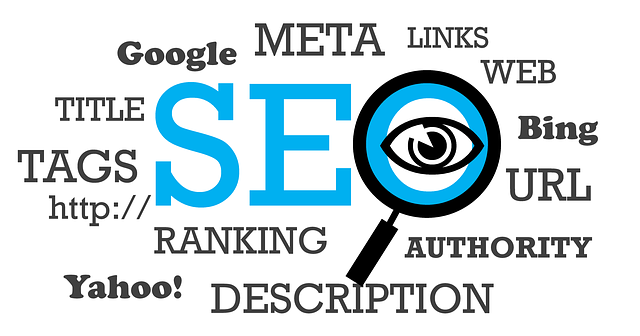Internal linking is vital for strong website structure, user experience (UX), and SEO performance. Conducting a strategic internal link audit involves assessing site architecture, evaluating anchor text usage, and optimizing broken links. Using tools like Google Search Console and Ahrefs, marketers can identify low-performing pages, rewrite anchor texts, and connect them to relevant content, enhancing UX, signaling search engines, boosting ranking potential, and driving organic traffic. By prioritizing contextual links to key pages, maintaining logical information flow, and using specific, keyword-rich anchor text, sites create a user-friendly navigation system and improve SEO visibility. Regular audits are essential for optimizing site structure as the website grows.
Marketers seeking to optimize site structure for enhanced user experience and improved SEO performance should focus on strategic internal linking. This article guides you through a comprehensive approach, starting with understanding the fundamentals of internal linking and its role in building a robust site architecture. Learn how to conduct an effective internal link audit to identify opportunities, target key pages, and implement contextual linking best practices. Discover strategies for efficient navigation and methods to measure the success of your internal link strategy, leveraging analytics to drive data-backed decisions.
- Understanding Internal Linking: The Foundation of a Strong Site Structure
- Conducting an Internal Link Audit: Uncovering Opportunities
- Identifying Key Pages and Content for Strategic Linking
- Implementing Contextual Internal Links: Best Practices
- Enhancing User Experience with Efficient Navigation
- Measuring Success: Analyzing the Impact of Your Internal Link Strategy
Understanding Internal Linking: The Foundation of a Strong Site Structure

Internal linking is a fundamental component of a robust site structure, serving as the digital threads that connect pages together and guide users through a website. Understanding how to leverage internal links effectively involves an in-depth look at what makes up a successful internal link audit. This process involves scrutinizing your site’s architecture, evaluating anchor text usage, and assessing the overall user experience facilitated by internal links.
By conducting a thorough internal link audit, marketers can uncover opportunities for optimization that directly impact SEO performance. A well-planned internal link audit strategy identifies broken links, redundant or low-quality anchors, and missed opportunities to interlink relevant content. Following a comprehensive internal link audit tutorial, you can prioritize improvements, create a more user-friendly navigation experience, and improve your website’s visibility in search engine results.
Conducting an Internal Link Audit: Uncovering Opportunities

Conducting an internal link audit is a strategic step for marketers aiming to optimize their site structure and enhance overall SEO performance. This process involves meticulously analyzing the current state of internal links on a website, identifying areas for improvement, and uncovering valuable opportunities. By employing tools designed for this purpose, marketers can assess link relevance, anchor text diversity, and the overall efficiency of navigation.
During an audit, you’ll discover low-performing pages with limited or irrelevant inbound links, which presents an opportunity to strategically rewrite anchor texts and connect these pages to more relevant content. This not only improves user experience by guiding visitors to valuable resources but also signals search engines about the importance of specific pages, boosting their ranking potential in the process. An effective internal link audit strategy can lead to increased organic traffic, improved website architecture, and better overall SEO results.
Identifying Key Pages and Content for Strategic Linking

To optimize site structure through strategic internal linking, marketers first need to identify key pages and content pieces that serve as the foundation of their website’s information architecture. This involves conducting a thorough internal link audit to assess current linking patterns and pinpoint areas for improvement. Tools like Google Search Console and SEO audits from platforms like Ahrefs or SEMrush can help uncover valuable insights.
Focus on high-value pages with strong relevance, such as category pages, product or service landing pages, and essential guides or resources. These pages should be interconnected to create a logical flow of information. By implementing an internal link audit strategy that prioritizes relevant and contextual links, marketers can enhance user experience, improve website navigation, and ultimately boost SEO performance through better distribution of page authority and increased visibility for both users and search engines.
Implementing Contextual Internal Links: Best Practices

Implementing contextual internal links is a strategic move for marketers aiming to enhance site structure and improve overall user experience. When executing an internal link audit, focus on creating relevant and meaningful connections between pages. Start by identifying key themes and topics across your website; ensure these are reflected in your internal linking strategy. For instance, if you have a travel blog, links between articles about specific destinations or travel tips can significantly benefit users and search engines.
A best practice for internal link audit optimization is to use anchor text that accurately represents the linked page’s content. Avoid generic terms; instead, opt for keywords that indicate the topic or value offered by the target page. This practice not only helps users understand the context but also signals to search engines the relevance of the links. Regularly review and update your internal link structure, especially as your website grows, to maintain a logical flow of information and maximize SEO benefits through an efficient internal link audit tutorial.
Enhancing User Experience with Efficient Navigation

A well-structured site with efficient navigation is key to enhancing user experience and improving SEO performance. Marketers can achieve this by conducting a thorough internal link audit, which involves analyzing the website’s current linking structure and identifying areas for optimization. Using tools like internal link audit software, you can assess each page’s context and relevance, ensuring links are strategic and beneficial to both users and search engines.
By implementing internal link audit tips, such as maintaining a logical flow of information, using keyword-rich anchor text, and linking to relevant content, sites can create a seamless user journey. This not only reduces bounce rates but also encourages deeper engagement, allowing visitors to discover more valuable content. As a result, SEO efforts are bolstered, with search engines recognizing a user-friendly and contextual internal linking strategy as an indicator of high-quality content and site authority.
Measuring Success: Analyzing the Impact of Your Internal Link Strategy

Evaluating the success of your internal linking strategy is a crucial step in understanding its impact on user experience and search engine optimization (SEO). A comprehensive internal link audit allows marketers to identify areas for improvement and optimize their site structure effectively. By analyzing the flow of links, you can assess how easily users navigate through your content and the potential value this structure adds to their journey.
Utilize tools that provide detailed insights into anchor text distribution, page authority, and referral traffic. An internal link audit tutorial or strategy guide can help you interpret these metrics. For instance, ensure a balanced distribution of relevant keywords in anchor texts across pages to avoid over-optimization. Optimize for both user experience and SEO by targeting strategic links towards key content, improving page rankings, and fostering better site interconnection.
